Your cart is empty now.
Navya-nyaya Theory of verbal Cognition, the Vyutpattivada; is the single most important treatise of Gadadhara Bhattacharya on Sabda, in general and on sentence meaning in particular. It is exclusively devoted to the establishment of Gadadhara's original views on how verbal cognition or sentence-meaning is produced from sentence. While the Saktivada deals with the theories of individual word- meanings and the role of expressive power in the understanding of word- meanings, the Vyutpattivada deals with the sentence-meaning and the role of samsargamaryada in understanding sentence-meaning. Thus, when studied with the Saktivada, it gives a comprehensive account of the Navya-nyaya theory of word and sentence-meaning.
The present edition of the Vyutpattivada, which is being published in two volumes, contains an introduction, original Sanskrit text, and Eng- lish translation along with exhaustive explanatory notes. As Gadadhara has used sophisticated Navya-nyaya style in the composition of the Vyutpattivada,. Dr. Bhatta's introduction and explanatory notes will prove to be of immense value to the students and the scholars of Indian Philosophy and linguistics in the understanding of the Vyutpattivada.
The author of this work, Dr. V.P Bhatta, had both traditional education (Vidhyavaridhi, Sarnpurnananda, Sanskrit University, Banaras, India) and formal exucation (Ph.D. SSEAS, U.C. Berkeley, ca, U.S.A) and is presently working as an Editor, Sanskrit Dictionary, Deccan College, Pune. He has published a number of books such as : (i) Epistemology, Logic and Grammar, (ii) Mandana's Distinction of Activity, Bhavanaviveka and (iii) Theory of expressive Power of words, (iv) Saktivada; and is presently working on Sabdakhanda of Gangosa's Tattavacintamani.
I have great pleasure in presenting 'Navya-nyaya Theory of Verbal' Cognition', A Critical Study of Gadadhara's Vyutpattivada, to the scholars and students of Indian Philosophy and linguistics. While Gadadhara's 'Theory of Expressive Power of Words', Saktivada, deals with the individual isolated meanings of general and certain specific words, his 'Theory of Verbal Cognition', Vyutpattivada, deals with the sentence-meaning. It presents a systematic account of the meanings of seven karaka-case endings, along with that of vocatives and feminine and secondary derivative affixes as constituents of sentence-meaning.
The Vyutpattivada, the best known treatise of Gadadhara on the Sabdakhanda, is the latest and. the highest authority on the Navya-nyaya theory of verbal cognition or sentence-meaning. Ever since in 1976, when I first started translating this work in connection with my Ph.D. Degree under the guidance of Prof. J.F. Staal, at University of California, Berkeley, U.S.A., I had wished to bring out a volume of the critical study of the Vyutpattivada along with the introduction and the translation with explanatory notes; and with the publication of this volume, a long cherished goal of mine is being realized.
The importance of the work of Vyutpattivada cannot be emphasized too sufficiently in the context of the Indian theory of verbal cognition or sentence-meaning. While the modern linguists have held sentence to be a grammatical form which is not in construction with any other grammatical form (Hockett, 1958), and sentence-meaning to be a set of 'propositions' which are objects designed to represent sentence structure while ignoring syntactic and phonological form (Neil Smith, 1980), Indian grammarians (Patan jali, on P. ii .1.1) have held that sentence is a linguistic unit that consists of a single predicate (ekatin vakyasamjnam), and sentence-meaning is the cognition of word-meanings produced from the linguistic utterance of words. However, generally Indian epistemologists such as the Navyas have held that sentence is a cluster of words (padasamaha) or cluster of nominals or verbals (suptihanta-samuha), and sentence-meaning is a cognition of syntactico-semantic relations between various individual word-meanings (padarthanvayabodha), And Gadadhara in his Vyutpattivada has explained as to how syntactico- semantic relations are cognized in sentence-meaning and also as to what specific relations are to be cognized between what different karakas and meanings of secondary derivatives in different types of sentences.
Although a number of modern scholars such as Professors D.H.H. Ingalls, Karl H. Potter, B.K. Matilal, K. Kunjunni Raja, P.T. Raju, P.C. Chakravarti etc. have explained Indian theories of word and meaning in general, and a bare translation of the first two Chapters of the Vyutpattivada was published by the present author himself in 1990, no critical study of the work of Vyutpattivada along with the translation and explanatory notes is available wherein the Navya-nyaya theory of verbal cognition (setentence-meaning) as established by Gadadhara in his work of Vyutpattivada is studied in comparison to the Mimamsakas and the Vaiyakaranas' theories of the same. The purpose of the present volume, therefore, is to illustrate the Navya-nyaya theory of verbal cognition as exposed in the Vyutpattivada in comparison to the theories of the same of the Mimamsakas and the Vaiyakaranas. And to support the same, the translation of the Vyutpattivada with explanatory notes elucidating the arguments of the Naiyayikas and the others and the text of the Vyutpattivada are provided.
Now as regards the editions of the text: There are many important editions of the text of Vyutpattivada. The first important edition of the text was published with the commentary of Gudharthatattvaloka by Dharmadatta (Baccajha) Suri in 1911 in Bombay. The next important edition of the text was published with the Adarsa commentary by Sudarsanacharya in 1913 in Kasi. The third important edition of the Vyutpattivada was published with the Prakasa commentary by Laksminatha Sharma in 1933 in Benares. However, the publications of the useful editions continued and the one that deserves mention here is the text with the Jays commentary of Jayadeva . Mishra by Umesh Mishra in 1953 for its clear exposition of difficult passages.
Now as regards the methodology adopted in the preparation of the Navya-nyaya Theory of Verbal Cognition. Since the subject matter of the Vyutpattivada involves a number of important issues of verbal cognition (sentence-meaning), a General introduction discussing various aspects of verbal cognition and the nominative and the accusative meanings is provided in the beginning for the convenient grasp of the subject matter of the text. Also since the Vyutpattivada presents the view points of the grammarians and the ritualists while establishing the Navya-nyaya theory in a highly technical Navya-nyaya style, I have provided the translation of the text with the explanatory notes arranged in paragraph by paragraph. Though for the understanding of the text, I have found all the commentaries useful, I have followed mostly Adarsa and Jaya commentaries in my translation and explanatory notes.
I would like to take this opportunity to express my gratitude and deep regards to Professors J.F. Staal, SSEAS, U.C. Berkeley, U.S.A., and N.S. Ramanujatatacharya, K.S. Vidyapeetha, Tirupati, India, who have initiated me into the research and guided on the critical study of the Vyutapattivada. Also, I am greatly indebted to my colleagues at Deccan College and family members at home who have all helped me in various ways in the preparation of the draft of the work. Finally my thanks are due to Shri
It is a great pleasure and privilege to present the second and the final volume of Navya. Nyaya Theory of Verbal cognition for the scholars and students of Indian Philosophy and linguistics. While the first volume covered the translations and explanations of the Vyutpattivada till the end of the first part of the second karaka, the second volume covers the translations and explanations of entire remaining portions of the text.
The Vyutpattivada constitutes one of the most significant contributions of Gadadhara to the field of Indian semantics. While Gadadhara has covered epistemology and logic through his commentaries on the Tattvacintamani such as the Tattvacinramani Vyakhya, and the Didhiti prakasa , he has covered philosophy of language, i.e. semantics by composing independent works such as the Saktivada and the Vyutapattivada, Importance of the study of the Vyutapattivada cannot be stressed too adequately from the view point of Indian philosophy and linguistics. While Gadadhara has explained the Navya Nyaya theory of word and meaning in the Saktivada, he has elaborated on the theory of sentence -meaning or verbal cognition (sabdabodha) , which is the understanding of Syntactico-semantic relations between word-meanings, in his Vyutpattivada. Gadadhara analyses systematically the meanings of various parts of speech and their semantic relations with each other to obtain the total sentence meaning or verbal cognition. For instance, he analyses the meanings of various karaka-and non-karaka cases, the meanings of verbal roots and conjugational endings, and the meanings of the primary and secondary derivative affixes, and then explains the various syntactico semantic relations (samsarga) between various parts of speech. While the cognition of various word-meanings (parts of speech) through power of relations (sakti). is verbal cognition in unity (sakhanda sabdabodha), the cognition of syntactico- semantic relations between various parts of speech through the power of semantic relations or relational seam is verbal cognition in unity (akhanda sabda bodha). Gadahara has adopted the most scientific approach to the analysis of sentence-meaning in the Vyutapttivada. He has taken into account various grammatical rules of Panini assigning karaka case affixes, conjugational affixes, and primary and secondary derivative affixes before finalizing the various parts of speech constituting the sentence meaning. Also he has expressed the view points of modern grammarians and the ritualists before establishing the Navya-nyaya theory of sentence-meaning. Thus, the work is an encyclopedia of Indian semantics.
The methodology adopted in the second volume is the same as the one adopted in the first volume. The volume II begins with an introduction discussing relevant topics such as the objecthood, the instrumentality, the indirect objecthood etc. that introduce Gadadhara's theories along with the theories of the grammarians and the ritualists wherever necessary. The translations, which are based on Sud ar sa nachar yas edition of the Vyutpattivada, Bombay, 1923, are arranged in numbered paragraphs and are supported by explanations. While the explanations are based, to a great extent, on the Adarsa commentary of Sudarsanacharya, attempt has been made to look into other commentaries such as the Gudharthatattvaloka and the Prakasa wherever found necessary.
I have received many valuable suggestions and corrections from my colleagues at Sanskrit Dictionary, Deccan College, Pune, and I am extremely grateful to all of them. Also my wife Sarveshwari and son Giridhar have always encouraged me and helped me by reading the parts of Proof and I would like to express my sincere gratitude towards them.
| Preface | iii-v | |
| Chapter-I | Meaning of the accusative in desiderative | 1-10 |
| Chapter-II | Denominative usages | 11-20 |
| Chapter-III | Types of objects (karmavibhagah) | 21-32 |
| Chapter-IV | Upapada and Karmaprava-canlya Accusatives | 33-44 |
| Chapter-V | Analysis of the agency (Kartrtva) | 45-55 |
| Chapter-VI | Analysis of instrumentality (Karanatvavicarah) | 56-65 |
| Chapter-VII | Meaning of Saha in instrumental usages | 66-77 |
| Chapter-VIII | Theory of indirect objecthood (sampradanatva) | 78-88 |
| Chapter-IX | Use of names in dative constructions | 89-101 |
| Chapter-X | Analysis of Ablation(apadanatva) | 102-112 |
| Chapter-XI | Meaning of ablative in 'vyaghrad bibheti' | 113-117 |
| Chapter-XII | Meaning of ablative in 'Kupad andham varayati | 118-123 |
| Chapter-XIII | Analysis of Sesa | 124-132 |
| Chapter-XIV | Analysis of Nirdharana in Genitive and Locative Constructions | 133-142 |
| Chapter-XV | Meaning of the locative and analysis of locushood | 143-155 |
| Chapter-II | English Translation with explanations, the Analysis of Accusative-meaning | 257-461 |
| Chaiter-III | The Instrumentlal-meaning | 462-590 |
| Chapter-V | Analysis of Ablative Meaning | 679-742 |
| Chapter-VI | Analysis of Genitive Meaning | 743-769 |
| Chapter-VII | Analysis of Locative Meaning | 770-791 |
| Chapter-IX | Analysis of the Meaning of Stripratyayas | 796-803 |
| Chapter-X | Analysis of meaning of Secondary Affixes | 804-830 |
| Glossarial Index | 831-847 |
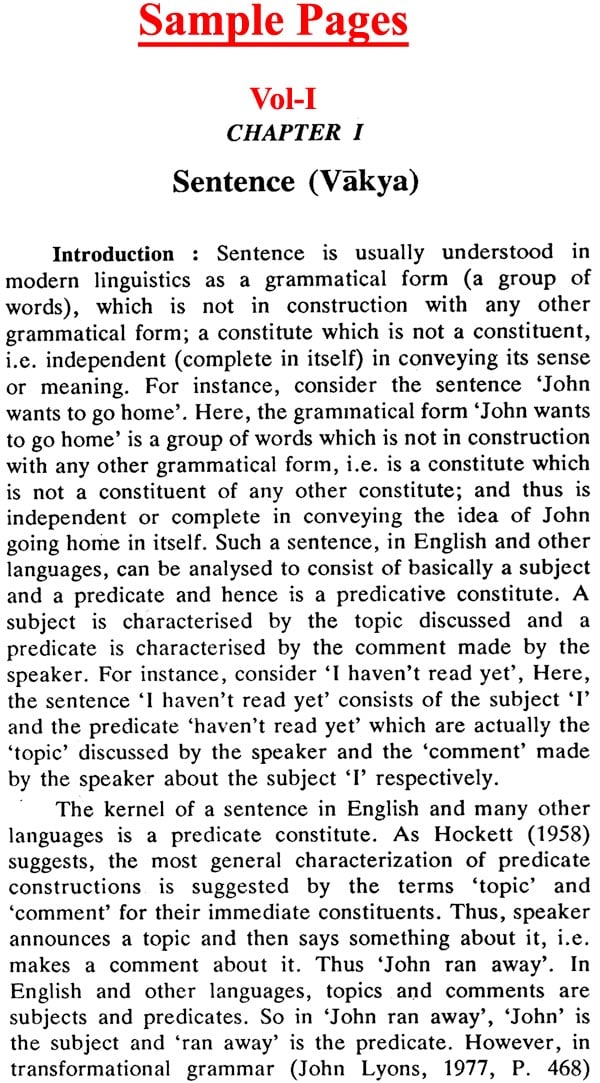

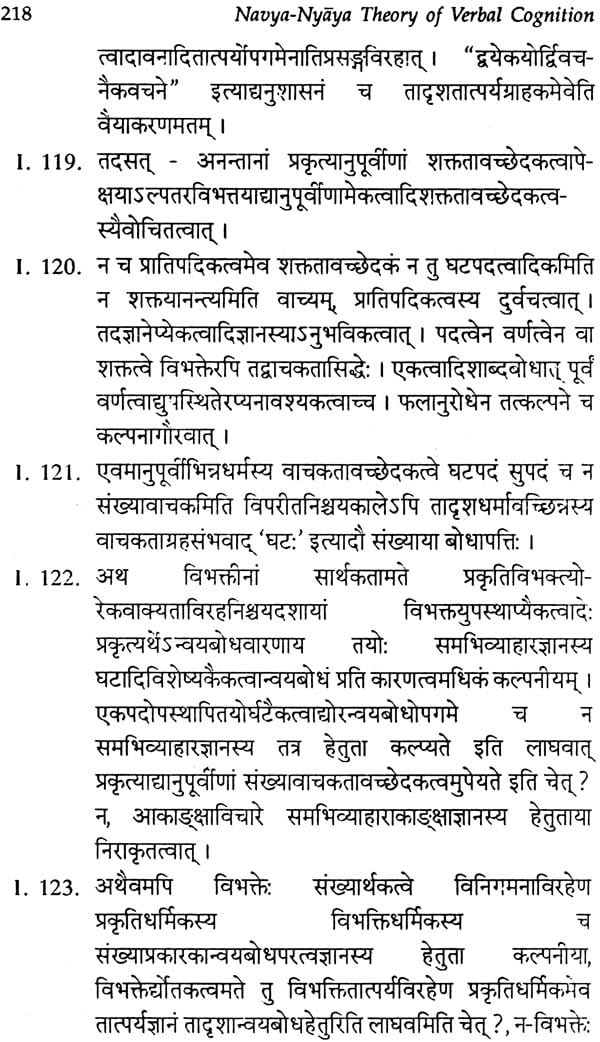

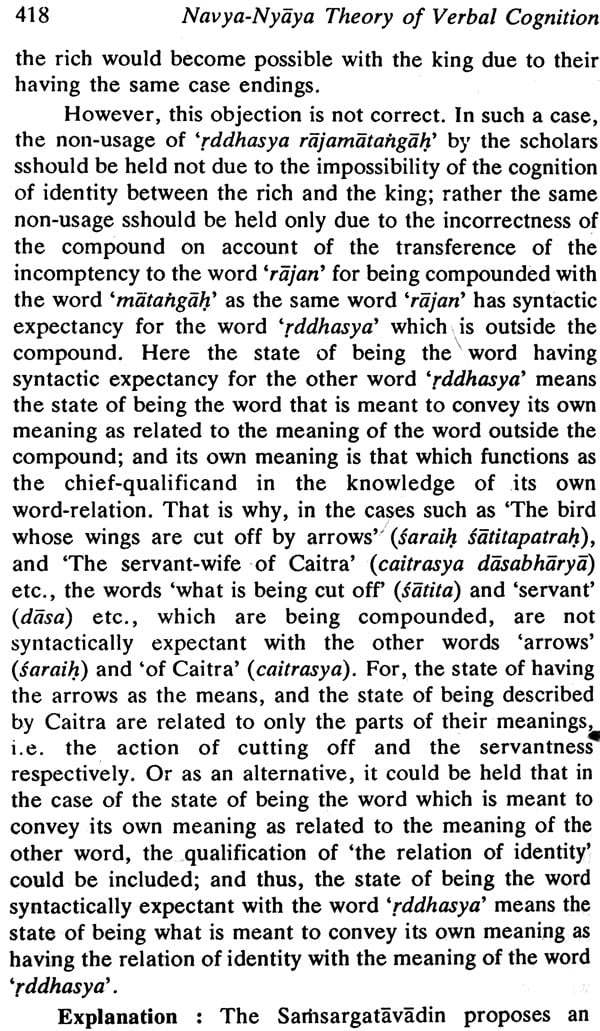
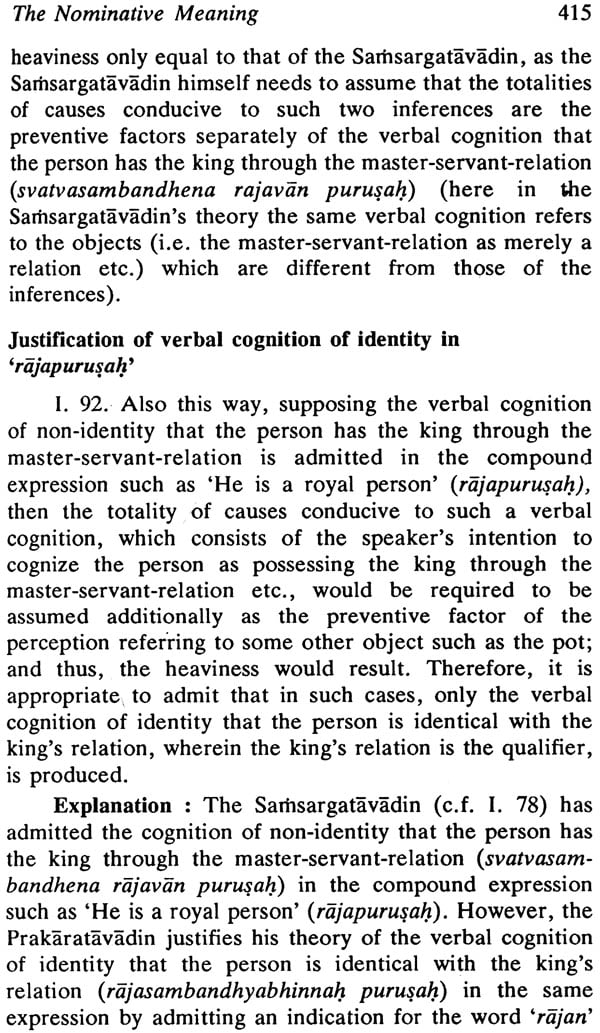
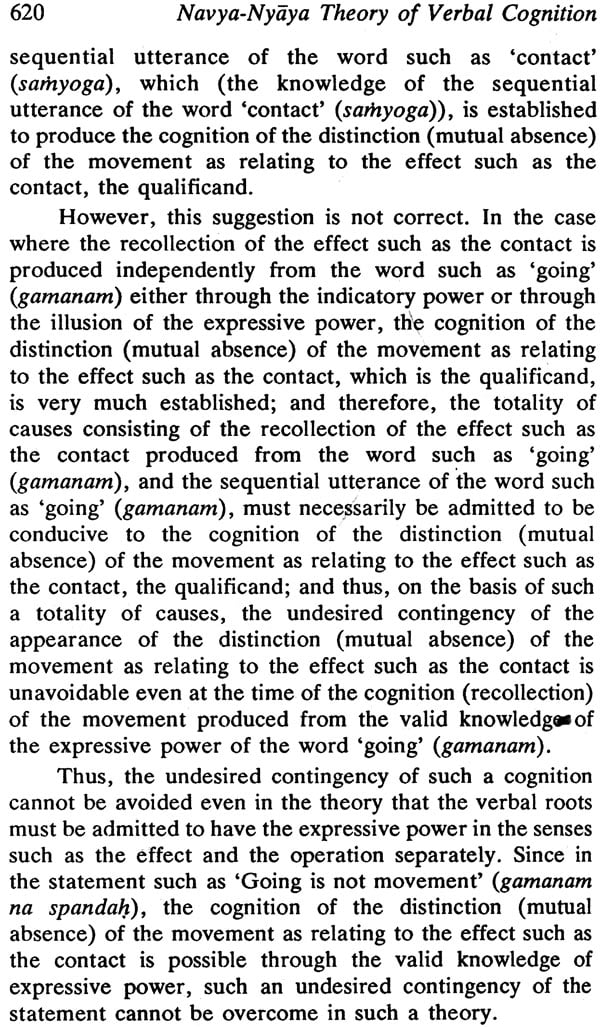
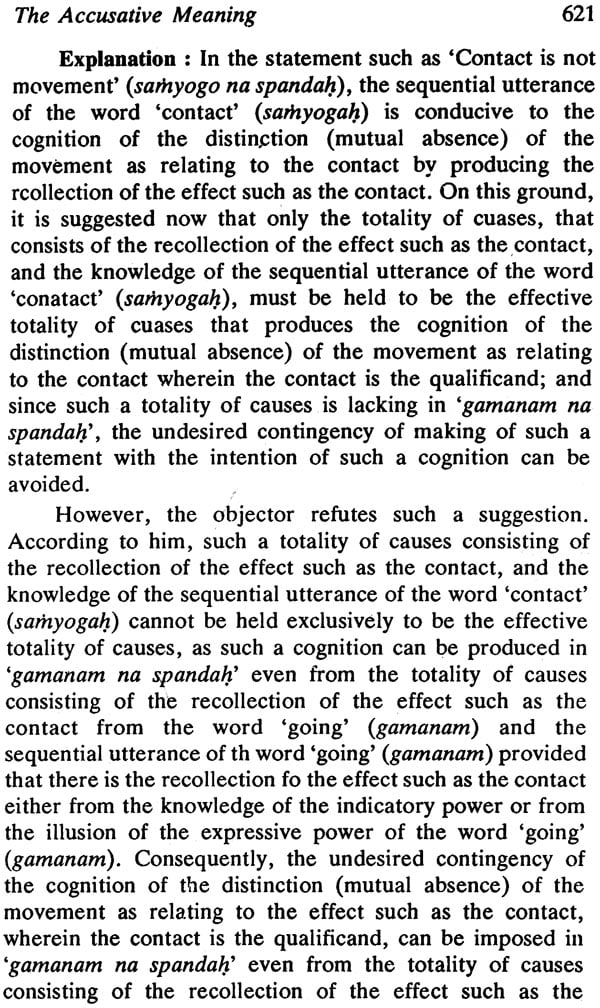
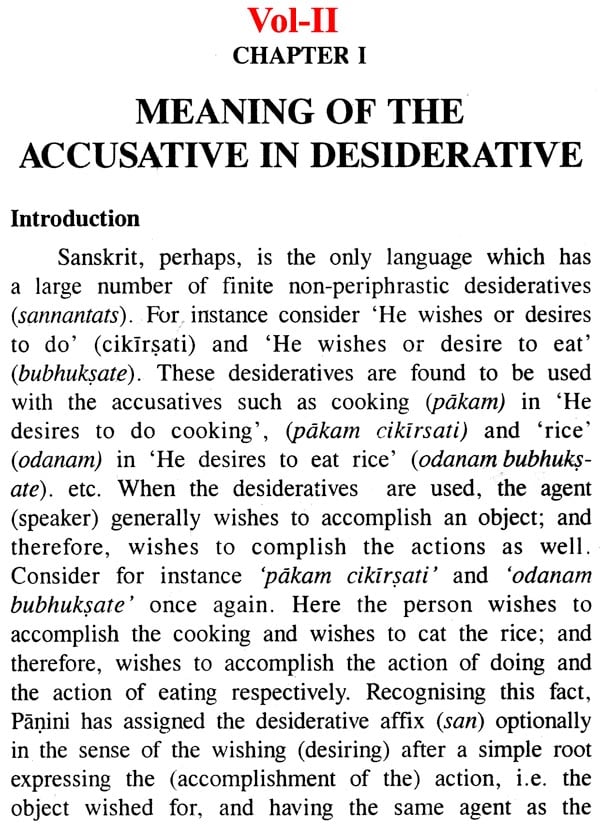
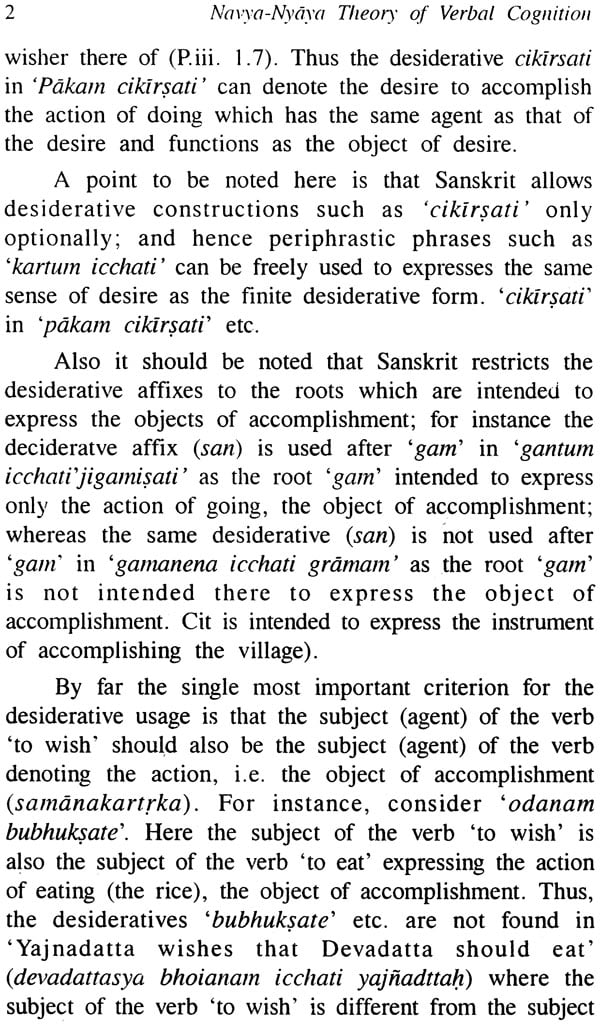
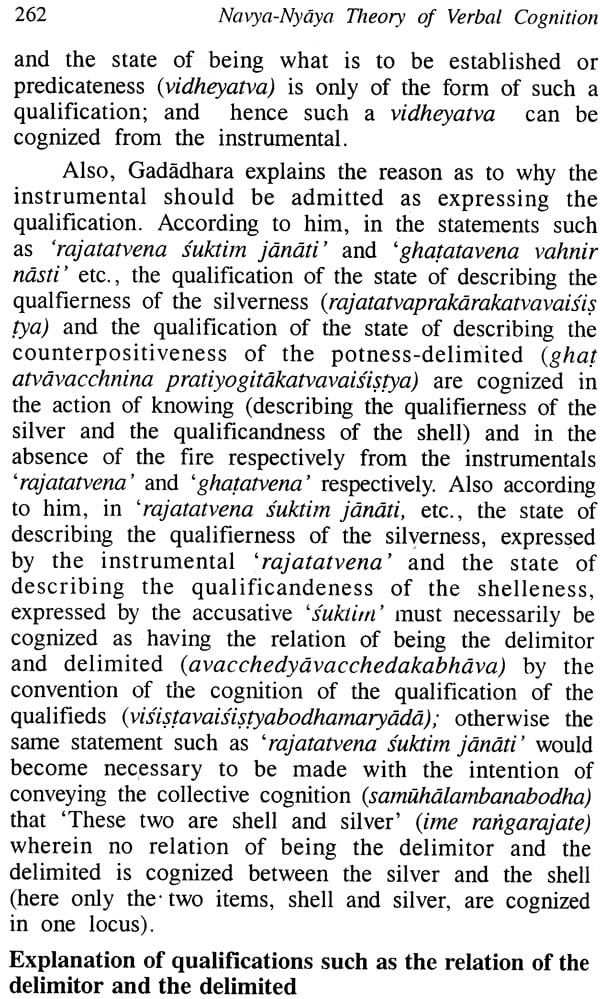
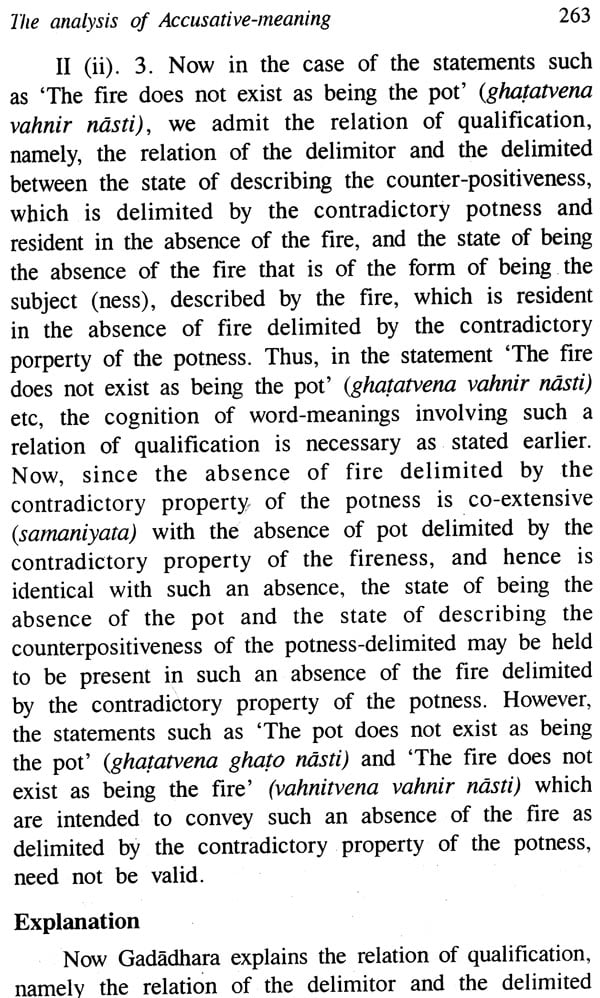
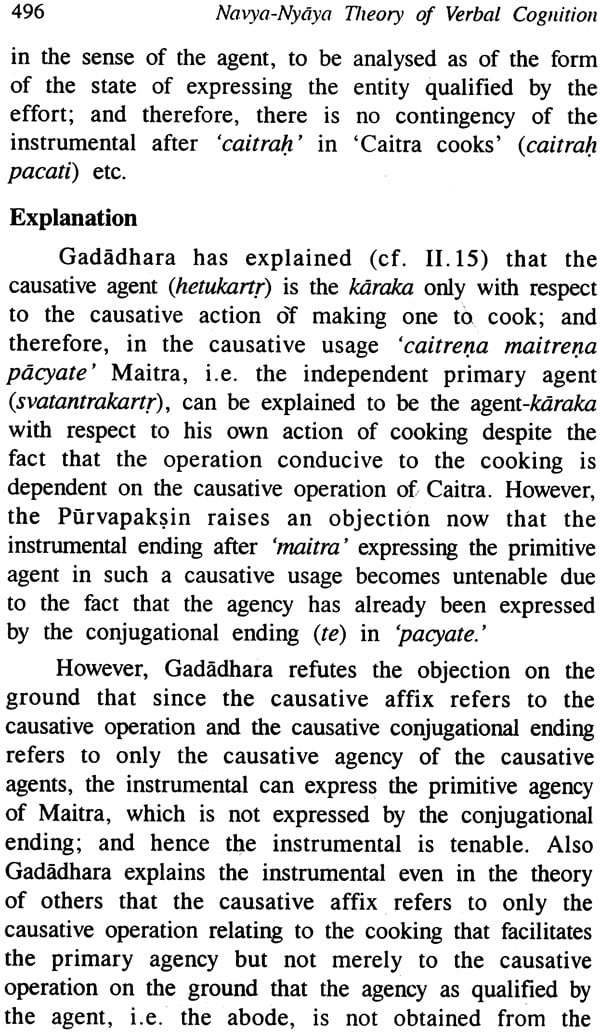
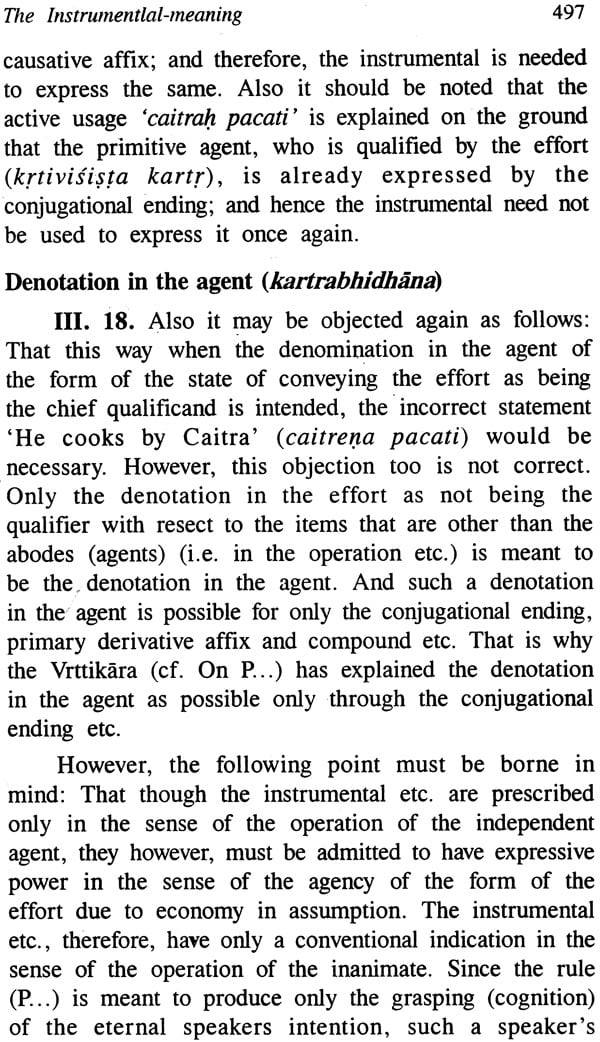
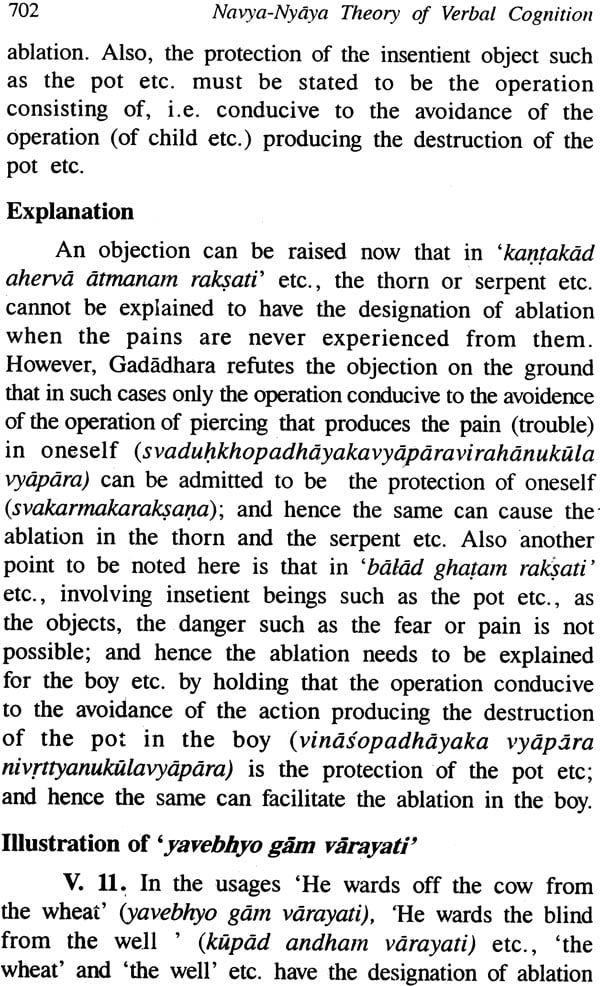
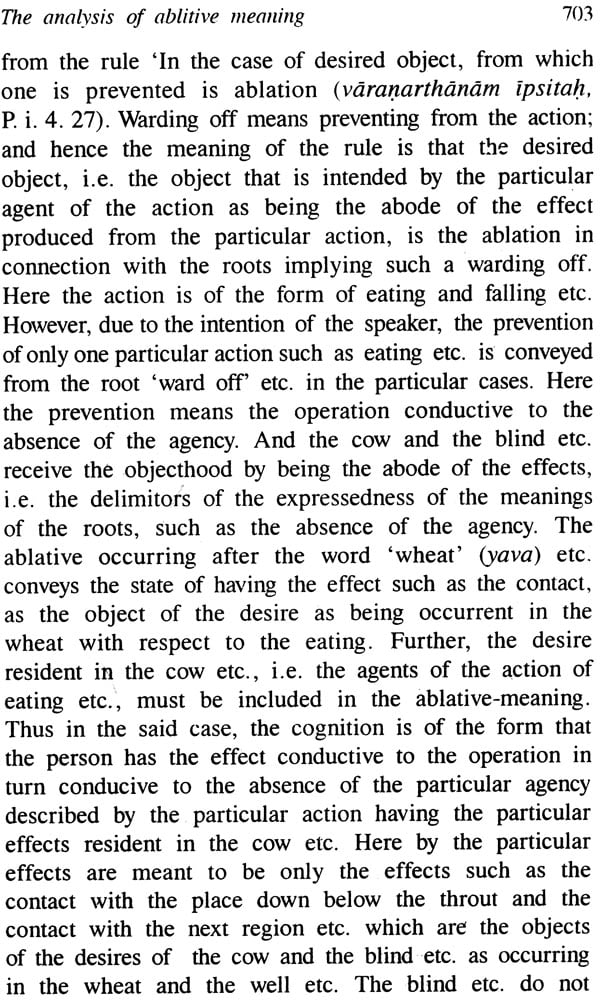
Delivery and Shipping Policy
- INTERNATIONAL SHIPPING
- Rs.1000-1100/kg
- ESTD. Delivery Time: 2-3 weeks (depending on location)
- Bubble Wrapped with Extra Padding
- NATIONAL SHIPPING
- NCR: Rs. 30/half kg
- Standard: Rs. 80/half kg
- Express shipments also available on Request
- ESTD. Delivery Time: Ranging from 1-4 days up to 7 business days (Depending on your choice of Delivery)
- TRACKING
- All orders; national or international, will be provided with a Tracking ID to check the status of their respective orders
- Depending on the Shipping Service, Tracking ID may be used on their respective tracking portals
Frequently Asked Questions (FAQs)
Domestic Shipping: 3-4 Days (after shipping)
International Shipping: 1-2 weeks (based on your location)
You will receive an email once your order has been shipped or you can email us if you didn't receive tracking details (info@mlbd.co.in)
Every book that we sell is the latest edition except all the rare books
Yes, we do provide free shipping, only on domestic orders (within India) above Rs.1500











